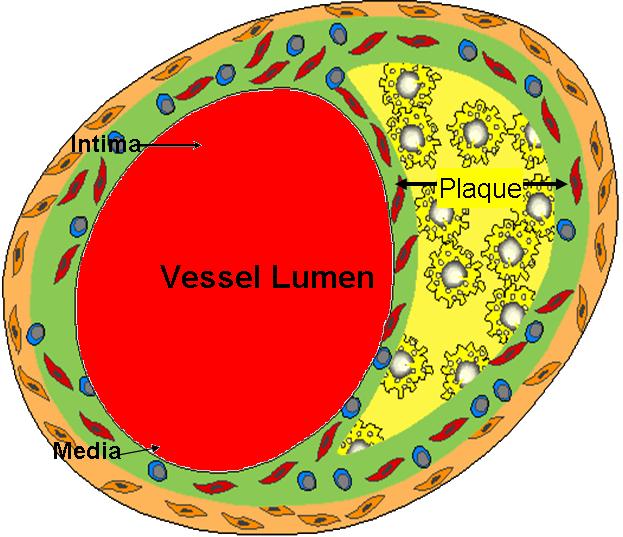Peripheral arterial disease pathophysiology
Editor-In-Chief: C. Michael Gibson, M.S., M.D. [1]; Associate Editor-In-Chief: Cafer Zorkun, M.D., Ph.D. [2]; Rim Halaby
Overview
Peripheral arterial disease is characterized by a narrowing of the peripheral blood vessels leading to decreased blood flow to the limbs. The most common underlying cause of PAD is atherosclerosis. As the atherosclerosis progresses with time beyond the ability of the vessels to compensate for it, mainly upon increased blood demand in exercise, symptoms of claudication start.
Pathophysiology
- Peripheral arterial disease is characterized by narrowing in the peripheral blood vessels leading to decreased blood flow to the limbs. The most common underlying cause of PAD is atherosclerosis.
- Atherosclerosis is a systemic disease that progresses over time and might involve the aorta, coronary, carotid and the medium-sized peripheral arteries.
- When the atherosclerosis involves the peripheral limb blood vessels, the blood flow to the limbs is compromised. Such atherosclerotic plaques tend to occur at vessel bifurcations due to both impaired atheroprotective mechanisms and turbulant blood flow. At the beginning the vessels try to adapt by metabolic and myogenic autoregulation. At this stage, the patient might be asymptomatic. As the atherosclerosis progresses with time beyond the ability of the vessels to compensate for it, mainly upon increased blood demand in exercise, symptoms of claudication start.
- Critical limb ischemia symptoms like rest pain occur when the stenosis in the arteries is so severe that the resting metabolic requirements of the tissues are not met by the arterial perfusion.[1]
- When the atherosclerotic plaques become unstable, thrombi form on top of a ruptured plaque located at a disease arterial segment. Atherothrombosis is the term currently used to describe this process.
Below is an image illustrating the narrowing of the blood vessel due to the presence of the atherosclerotic plaque:

References
- ↑ Hirsch AT, Haskal ZJ, Hertzer NR, Bakal CW, Creager MA, Halperin JL, Hiratzka LF, Murphy WR, Olin JW, Puschett JB, Rosenfield KA, Sacks D, Stanley JC, Taylor LM, White CJ, White J, White RA, Antman EM, Smith SC, Adams CD, Anderson JL, Faxon DP, Fuster V, Gibbons RJ, Hunt SA, Jacobs AK, Nishimura R, Ornato JP, Page RL, Riegel B (2006). "ACC/AHA 2005 Practice Guidelines for the management of patients with peripheral arterial disease (lower extremity, renal, mesenteric, and abdominal aortic): a collaborative report from the American Association for Vascular Surgery/Society for Vascular Surgery, Society for Cardiovascular Angiography and Interventions, Society for Vascular Medicine and Biology, Society of Interventional Radiology, and the ACC/AHA Task Force on Practice Guidelines (Writing Committee to Develop Guidelines for the Management of Patients With Peripheral Arterial Disease): endorsed by the American Association of Cardiovascular and Pulmonary Rehabilitation; National Heart, Lung, and Blood Institute; Society for Vascular Nursing; TransAtlantic Inter-Society Consensus; and Vascular Disease Foundation". Circulation. 113 (11): e463–654. doi:10.1161/CIRCULATIONAHA.106.174526. PMID 16549646. Retrieved 2012-10-09. Unknown parameter
|month=ignored (help)